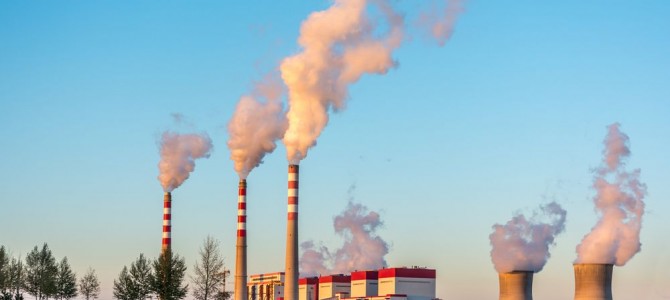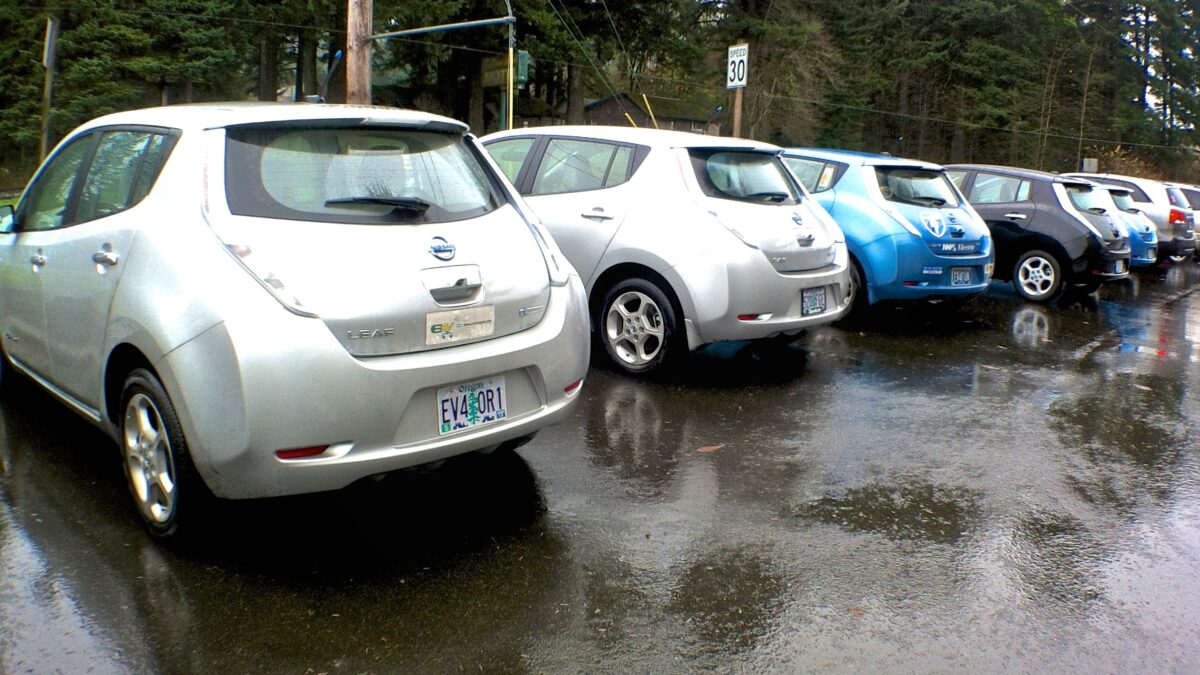
Before the U.S. Supreme Court delayed it, the Environmental Protection Agency’s Clean Power Plan (CPP) sought to impose a costly cap-and-trade carbon emissions scheme on the nation’s power grid—the same rule Congress has considered and rejected several times since 2007.
A 1,500-page regulatory behemoth, the CPP specifies carbon dioxide reduction targets for 47 states as well as three Native American tribal jurisdictions, with the overall goal of reducing carbon emissions by 32 percent below 2005 levels by 2030. In theory, the CPP will reduce the global average temperature by 0.018 degrees Celsius by 2100.
For most Americans, reducing carbon emissions is a sort of gauzy, feel-good aspiration. Reducing carbon is all fine and dandy until you realize your electric bill may go up 30 percent or more, food and water may become costlier, and jobs may be lost, all for a projected amount of planetary cooling that is well within the wide margins of error of climate models. Not to mention that these climate models have not even remotely tracked with real-world observations.
Further, there’s that nagging issue that carbon dioxide isn’t even a toxic pollutant and therefore ought not to concern the EPA. Rather, carbon dioxide is a plant fertilizer that we all aim to exhale for as long as we can on this blue-green orb we call home.
Need Jobs, Navajo? Tough
In 2008, ten Democratic senators opposed cap-and-trade, with Sen. Sherrod Brown (D-Ohio) noting it would impose “undue hardship on our states, key industrial sectors, and consumers.” What was true for a proposed law is still true for a regulation that does the same thing.
Case in point, the EPA’s CPP, if enacted, will wreak havoc in Arizona and the Navajo Nation, at 27,413 square miles an area larger than West Virginia sprawling across three states with a population of 174,000 people (another 158,000 claim Navajo ancestry, but live elsewhere), many suffering from lack of jobs and poverty as well as no running water or electricity.
The Navajo Nation is home to two large, coal-fired power plants. The Navajo Generating Station in northern Arizona near the town of Page, Glen Canyon Dam, and Lake Powell, saw its first of three units open in 1974. Ironically, this generating station owes its construction to environmental opposition to additional hydroelectric dams on the Colorado River downstream from the Glen Canyon Dam and upriver from the Grand Canyon.
Environmentalists suggested that a nuclear power plant be built in place of the dams! The Navajo Generating Station was built instead, fueled by nearby sources of clean coal. The plant employs about 500 people, 80 percent of whom are Navajo.
EPA Has Already Squeezed Navajo Opportunities
Under an EPA mandate to improve winter visibility in the Grand Canyon by 2 percent to 7 percent, the plant installed sulfur dioxide scrubbers in the mid-90s at an inflation-adjusted cost of $653 million. From 2009 to 2011, the facility had to install an additional $49 million worth of nitrous oxide (NOx) burners with ongoing pressure from EPA to spend $600 million to further reduce NOx. Installing the NOx burners would then require spending another $500 million to reduce the additional pollution they cause.
The Four Corners Generating Station first opened in the early 1960s. At one point it operated five generating units, but costly environmental rules caused the station to retire three units early, reducing its overall power output by about one-quarter. This led to a reduction in its coal consumption, which shifted the economies of scale at the Navajo Mine that fed the plant.
BHP Billiton, the leaseholder of the mine on Navajo land, already under tremendous financial pressure, determined the coal mine would become unprofitable. BHP Billiton threatened to close the mine, which would put hundreds of workers, mainly Navajo, out of work and hitting the Navajo Nation government for a loss of millions in royalty revenue while also making the power plant less cost-effective.
Not willing to easily give up on the jobs and revenue, the Navajo Nation bought the Navajo Mine, using its sovereign tax and regulatory advantages to turn a profit where a private company no longer could, due to tightening federal regulations.
Now, the EPA’s CPP threatens additional reductions in coal power use in Navajo country that will put greater financial pressure on both the Navajo Mine and the Kayenta coal mine, operated by Peabody Energy, the operation that annually supplies about 8 million tons of low sulfur bituminous coal to the Navajo Generating Station. Some 400 people, mostly Navajo, work at the Kayenta mine.
Forget Staying Alive in the Desert
Sadly, the fact that the power plants and coal mines on Navajo territory are under attack should come as no surprise. Critics contend that the Navajo Generation Station is America’s third single-largest source of CO2 emissions—of course, it produces about 17,000 gigawatt-hours of electricity in a given year with a capacity factor of 86 percent, meaning the plant is up and producing 86 percent of its full-rated power over the course of a year, 24/7/365. Compare this to Arizona’s 99 wind turbines, which produced about 218 gigawatt-hours in 2013 at a capacity factor of 19.5 percent.
Further, some 90 percent of the power plant’s electricity goes to operate massive water pumps that push Arizona’s allocation of Colorado River water uphill to Central Arizona, where the water is consumed by 5 million people and extensive agricultural operations. For the true believers in the environmental Left, this is the real sin of the Navajo Generating Station: it makes modern life possible in the desert.
Another tack in the Left’s multi-pronged campaign against coal is the contention that the Navajo Generating Station’s operations caused the drought that was affecting much of the American Southwest last year. As has been the case throughout Earth’s history, droughts come and go, and today none of the Navajo Nation remains in drought, largely due to a powerful El Niño–Southern Oscillation, a natural weather phenomenon in the tropical eastern Pacific Ocean.
As a replacement for the loss of fossil fueled power on the Navajo Nation, some have proposed installing wind turbines. But, since wind is intermittent, it would require 4.4 times more nameplate capability to generate the same amount of electricity as the coal plants do. Further, the best site for wind on the Navajo Nation sits in the middle of an important migratory path for eagles.
Coal Protects National Security
Lastly, an ongoing reduction in the use of coal power in America has negative national security repercussions. Power plants that use natural gas, the main replacement for coal, generate power directly from the pipeline. Disrupt the flow of natural gas, and the power plant shuts down immediately. Coal-fired power plants, on the other hand, typically keep a large store of coal on hand and can operate for weeks if cut off from their supply. This makes coal power a vital and reliable part of the nation’s energy mix during a national emergency.
The EPA’s CPP will, if implemented, land like a hammer blow on much of America’s electrical grid, causing further retrenchment in an industry already reeling from increased air quality rules and a lack of credit from banks eager to show financial regulators they know who is in charge. Many Americans will pay 30 percent or more for their electricity and barely notice the difference, but for millions more, such as the members of the Navajo Nation, the Clean Power Plan will have farther-reaching effects, destroying jobs and harming families.
This is why the Texas Public Policy Foundation, through its Energy for a Rising Generation initiative, made this short video—to frame this policy issue in the context of flesh-and-blood Americans. For all of us, the Clean Power Plan isn’t theory, it’s a painful fact.









